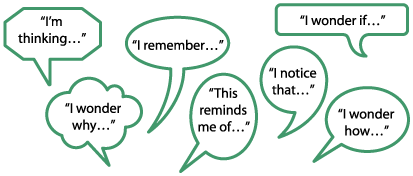  (Page 5 of 7) (Page 5 of 7)
Read to Children to Promote Language Development
Interactive reading
develops children’s conversational and listening
skills. In interactive reading, books are used
as tools for promoting dialogue, learning new
vocabulary through picture labeling, building
expressive language skills, and increasing narrative
understanding through conversations about the
book. Interactive reading promotes a deeper understanding
and interpretation of books. During interactive
reading teachers should strive to do the
following things:
 |
Prompt children to
be actively involved in conversations
about the meaning of the book. |
| Clarify
and extend children's understandings
about the meaning of the Book. |
| Expand
and extend the language of children's
responses. |
| Explain
the meanings of some of the unusual vocabulary
included in the book. |
| Prompt
children to use the new vocabulary in their responses. |
|
Interactive reading is
designed to encourage children to ask questions
and make comments. The teacher strategically makes
comments and asks questions while reading to encourage
children to talk about the book. What kinds of
comments can teachers make to encourage children
to talk about the book? Try these comments:

Appropriate questions for interactive reading include:
| |
Fill-in-the-blank: |
"The
papa bear said ______" |
 |
| |
Recall: |
"What did Goldilocks
do when she went upstairs?" |
 |
| |
Open-Ended
questions with no
right or wrong
answer: |
"How
did the
three bears treat Goldilocks?" |
 |
| |
Who,
What, Where,
When, Why questions: |
"Why do you
think Goldilocks went inside the bears' house?"
"Who do you think was most afraid?" |
 |
| |
Did
you ever? |
"Did you ever
go into someone's house or room without
being invited?" |
|